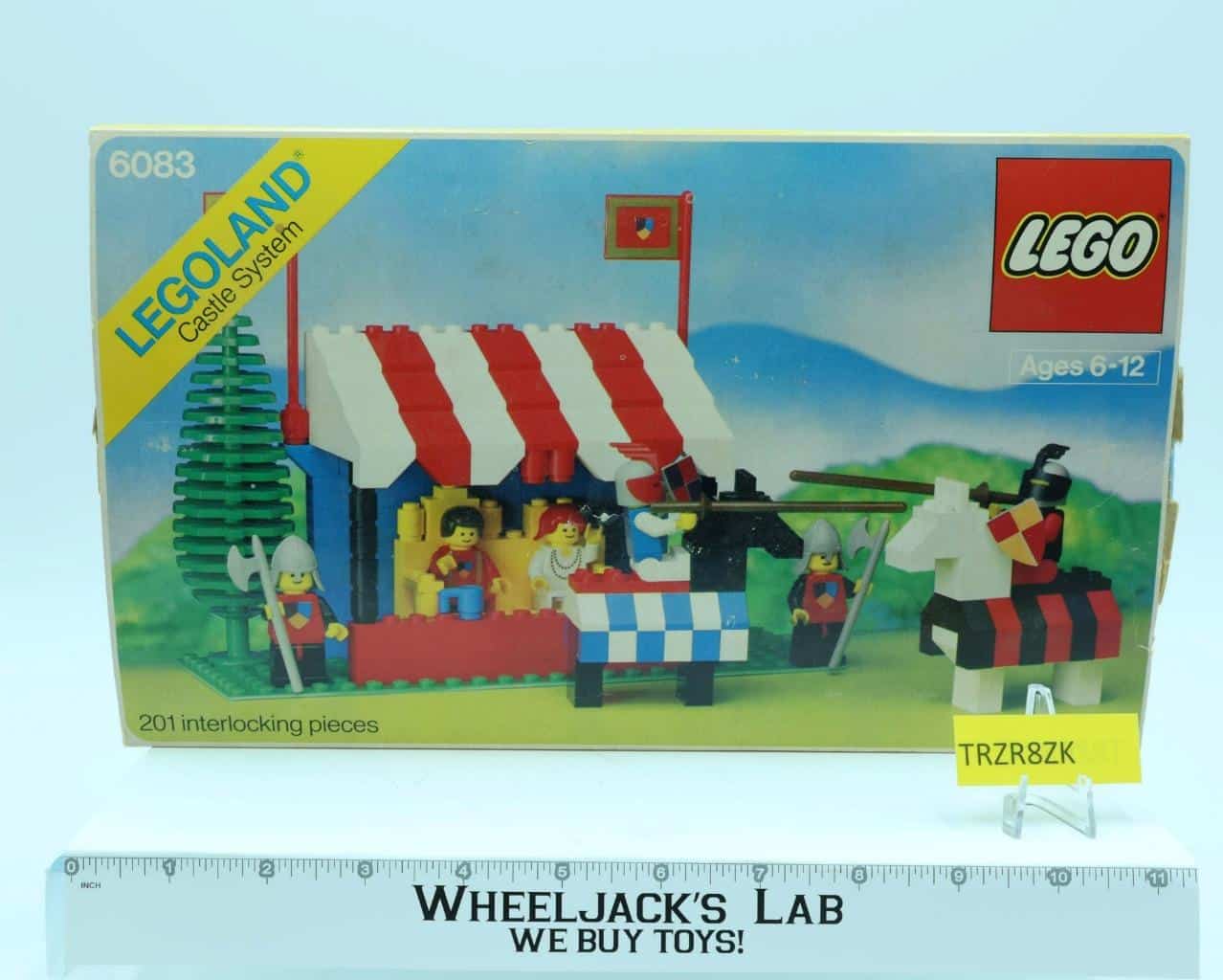One of the most recognizable toy brands is LEGO, which has a famous brick-based building system. This small plastic brick is part of an intrinsic system that allows children of all ages to express their imagination. The locking link system provides enough support to build both tiny and colossal. While some fans have created massive sculptures on display at locations like Disney World, LEGO also creates tailored system sets with detailed instructions. However, the company had humble roots.
The early history of LEGO
During the early decades of the 20th century, Ole Kirk Christiansen founded LEGO, a name that originated from the Danish phrase “leg godt,” which means “play well.” Using his background as a carpenter, the company focused on creating wooden toys. As the Great Depression economy made it less financially sound to use wood, the company began to release plastic toys.
History changed in 1949 when LEGO produced its very first plastic building block. The Automatic Binding Bricks were the precursor to the modern system and showed the great potential of the company’s ingenuity. By 1958, the company had patented its interlocking bricks whose clutch power provided stability in all of the various configurations. This officially gave birth to the LEGO brick, but the company still needed to provide sets for the public to build.
As LEGO was finalizing its plans for its signature interlocking bricks, they were also developing a System in Play. Godtfred Kirk Christiansen wanted to standardize how LEGO developed their play sets. So, he developed six guidelines:
- The toy has to be compact in its dimensions without limiting the free expression of imagination.
- It has to be reasonably priced.
- It has to be simple and durable and yet offer unlimited variety.
- It has to be suitable for children of all ages and for both boys and girls.
- It has to be classic in its presentation, i.e., a classic among toys, needing no renewal.
- It has to be easily distributed.
Using these principles, LEGO set out to build a city. The first sets using the updated LEGO bricks began popping up in 1955 with a city or town feel. For instance, there was an Esso Station, a garage with an automatic door, a small store, and a small house. From these humble beginnings, the LEGO brick expanded to include dozens of themes and thousands of sets.
LEGO System Sets in the 1970s
As LEGO entered the 1970s, it grew into an international company. They began to expand the themes for their System Sets, adding new choices of bricks and ideas. For instance, beginning in 1978, LEGO took their fans to Space with science fiction-themed builds. They also took their fans to an age filled with dragons and magic with LEGO Castle. The toy line expanded even more in 1989 with the addition of the LEGO Pirates.
LEGO also explored new building methods as the basic sets expanded with new settings. They introduced LEGO TECHNIC in 1977 for those interested in mechanical builds. This line allowed fans to use axles, gears, pulleys, and other connections to create moving builds. They later included even more specialized tools with rubber bands, pneumatic elements, springs, and strings. There was the chance to use motors and remote controls for the most serious of builds. The success of TECHNIC has led to these parts appearing in their standard system sets as well.
LEGO System Sets toy lines in the 1990s to the modern day
By the 1990s, LEGO began to explode with multiple new ideas and themes. In 1995, they allowed their fans to explore the sea with the Aquazone. Then, in 1996, they took players back in time to the time of Cowboys and Indians with the Western theme. There were also Time Cruisers in 1996 and Adventures in 1998. However, the toy line changed forever in 1999 when LEGO introduced its first licensed system theme, Star Wars.
The 2000s saw an explosion of licensed lines appearing in the LEGO aisle. Harry Potter received the LEGO touch in 2001. Then, SpongeBob SquarePants, Avatar: The Last Airbender, and Batman were added in 2006. LEGO later added lines like Indiana Jones in 2008 and DC and Marvel Superheroes in 2011. There would even be Lord of the Rings, The Simpsons, The Lone Ranger, Jurassic Park, and many more licensed sets that appeared over the decades.
Meanwhile, LEGO continued experimenting with new original ideas like BIONICLE in 2001. Rather than building settings, this toy line focused on creating creative action figures. Beyond the action figures, this line had a Comic book series that lasted from 2001 until 2005. There were also three animated films and a 4-episode television series. This toy line lasted nearly a decade, with its original run ending in 2010. It even had a minor revival from 2015 until 2016.
Otherwise, LEGO added more traditional themes, such as the Racers in 2001. They would then explore the Viking Age from 2005 until 2006. Fans got another take on underwater exploration with the Aqua Raiders in 2007. In 2015, the company attempted to chase the toys-to-life video game trend with LEGO Dimensions. One of their most unique experiments occurred in 2021, when the Vidiyo System aimed to weave AR technology into the mix.

